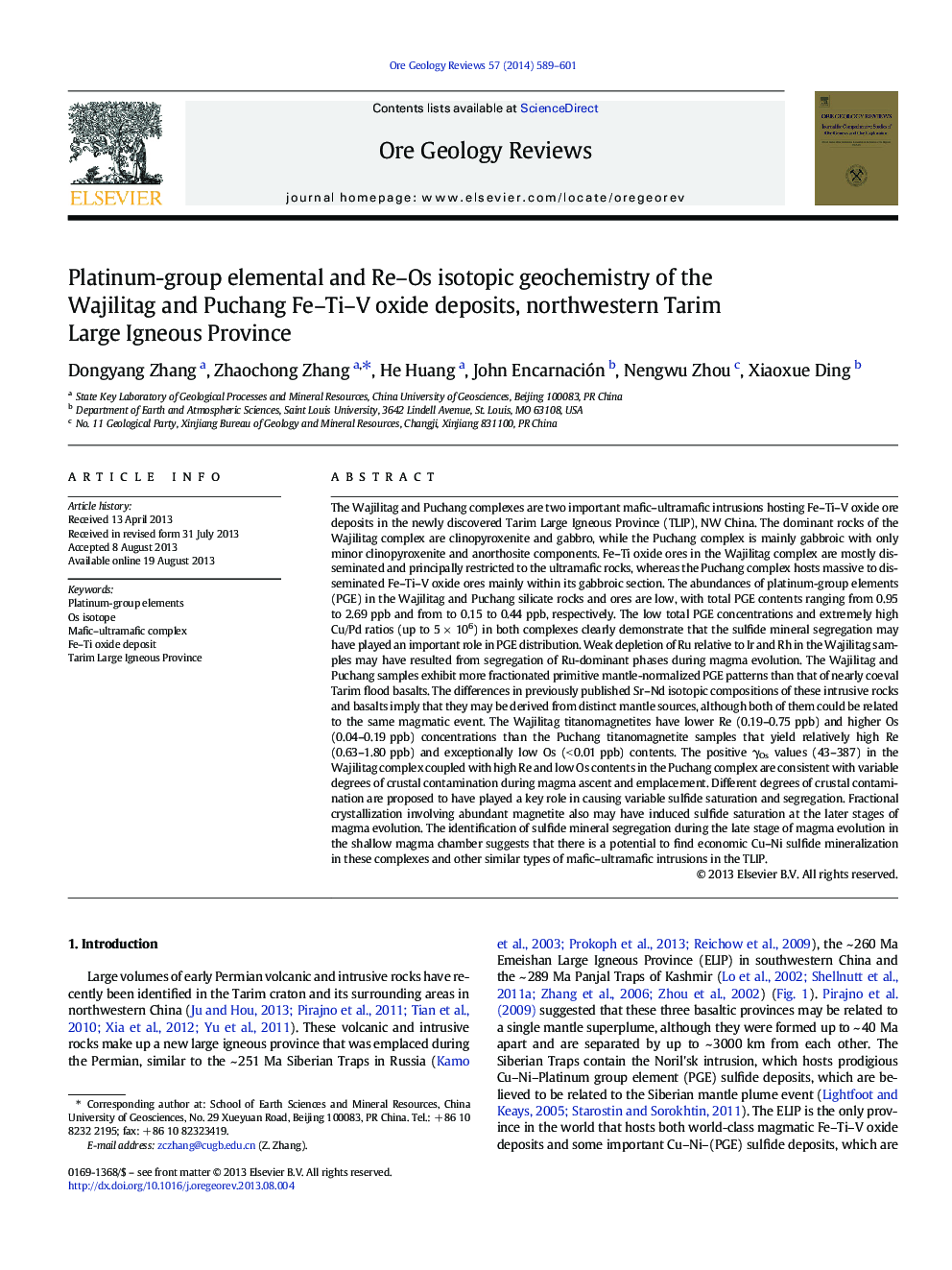| کد مقاله | کد نشریه | سال انتشار | مقاله انگلیسی | نسخه تمام متن |
|---|---|---|---|---|
| 4697527 | 1637246 | 2014 | 13 صفحه PDF | دانلود رایگان |

• The Wajilitag and Puchang intrusive rocks are depleted in PGE.
• Variable sulfide segregation caused the variable PGE concentrations.
• No genetic relationship between these intrusive rocks and Tarim flood basalts.
• These intrusions appear favorable for Ni–Cu sulfide mineralization.
The Wajilitag and Puchang complexes are two important mafic–ultramafic intrusions hosting Fe–Ti–V oxide ore deposits in the newly discovered Tarim Large Igneous Province (TLIP), NW China. The dominant rocks of the Wajilitag complex are clinopyroxenite and gabbro, while the Puchang complex is mainly gabbroic with only minor clinopyroxenite and anorthosite components. Fe–Ti oxide ores in the Wajilitag complex are mostly disseminated and principally restricted to the ultramafic rocks, whereas the Puchang complex hosts massive to disseminated Fe–Ti–V oxide ores mainly within its gabbroic section. The abundances of platinum-group elements (PGE) in the Wajilitag and Puchang silicate rocks and ores are low, with total PGE contents ranging from 0.95 to 2.69 ppb and from to 0.15 to 0.44 ppb, respectively. The low total PGE concentrations and extremely high Cu/Pd ratios (up to 5 × 106) in both complexes clearly demonstrate that the sulfide mineral segregation may have played an important role in PGE distribution. Weak depletion of Ru relative to Ir and Rh in the Wajilitag samples may have resulted from segregation of Ru-dominant phases during magma evolution. The Wajilitag and Puchang samples exhibit more fractionated primitive mantle-normalized PGE patterns than that of nearly coeval Tarim flood basalts. The differences in previously published Sr–Nd isotopic compositions of these intrusive rocks and basalts imply that they may be derived from distinct mantle sources, although both of them could be related to the same magmatic event. The Wajilitag titanomagnetites have lower Re (0.19–0.75 ppb) and higher Os (0.04–0.19 ppb) concentrations than the Puchang titanomagnetite samples that yield relatively high Re (0.63–1.80 ppb) and exceptionally low Os (< 0.01 ppb) contents. The positive γOs values (43–387) in the Wajilitag complex coupled with high Re and low Os contents in the Puchang complex are consistent with variable degrees of crustal contamination during magma ascent and emplacement. Different degrees of crustal contamination are proposed to have played a key role in causing variable sulfide saturation and segregation. Fractional crystallization involving abundant magnetite also may have induced sulfide saturation at the later stages of magma evolution. The identification of sulfide mineral segregation during the late stage of magma evolution in the shallow magma chamber suggests that there is a potential to find economic Cu–Ni sulfide mineralization in these complexes and other similar types of mafic–ultramafic intrusions in the TLIP.
Journal: Ore Geology Reviews - Volume 57, March 2014, Pages 589–601